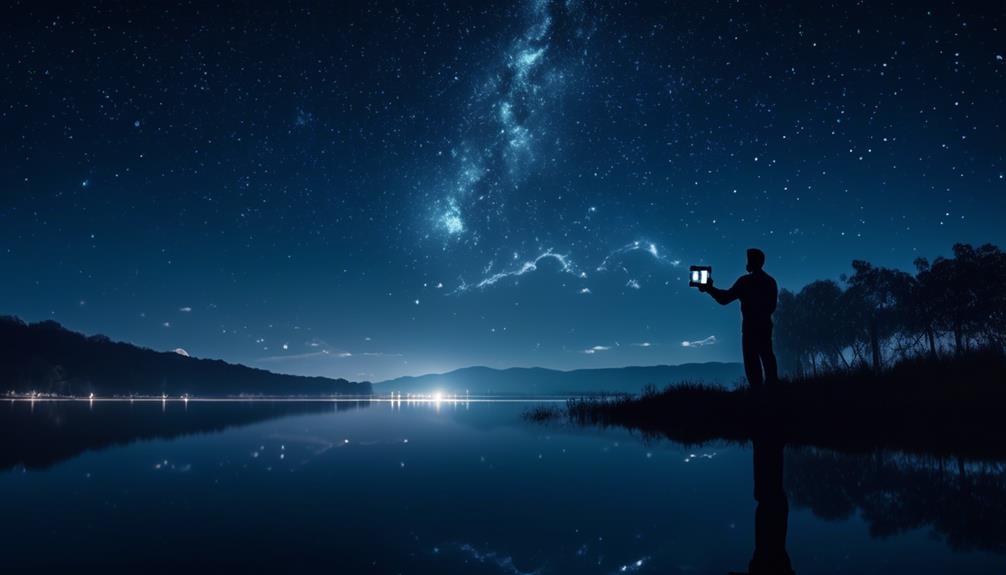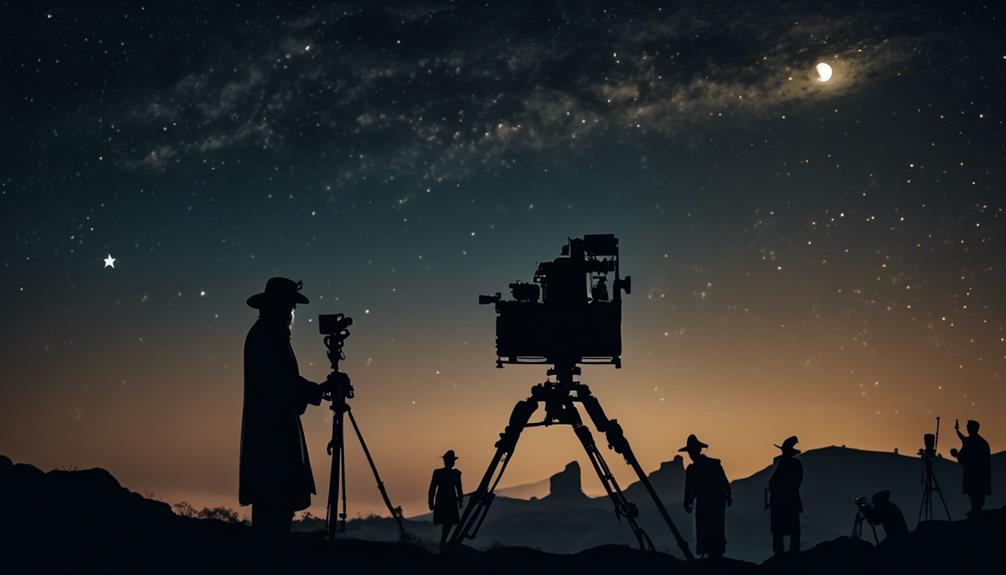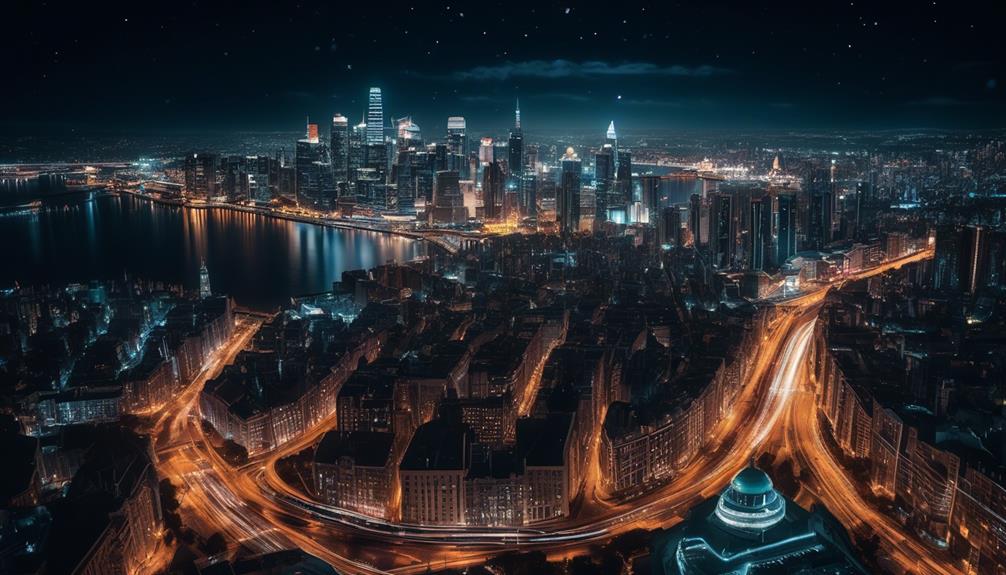Please note this post may contain affiliate links picked by me (Jay) that I have deemed may be of interest or relevant to you the reader of this.
These links do not affect the cost of the thing if you decide to purchase but i may get a little money if you choose to purchase.
For more information on my affiliate link policy click here.
Nighttime is the perfect playground for photographers seeking to capture captivating and creative shots. As the sun sets and darkness envelops the world, a whole new realm of possibilities opens up.
But mastering the art of night photography can be a daunting task, requiring a solid understanding of exposure, white balance, and long exposure techniques. Fear not, for in this how-to guide, I will share my passion for night photography and equip you with the knowledge and skills to elevate your nocturnal captures to new heights.
So, prepare to unlock the secrets of low-light mastery, unravel the mysteries of white balance, and discover the magic of long exposures. Are you ready to embark on this thrilling photographic journey?
Key Takeaways
- Noise reduction techniques are crucial for maintaining image quality in low-light photography.
- Finding the right balance between ISO and shutter speed is essential in low-light photography.
- Investing in the right gear, such as a camera with manual white balance control, is essential for accurate white balance in nighttime photography.
- Experimenting with different exposure times and creative techniques can result in unique and imaginative nighttime images.
Mastering Exposure in Low-Light
Mastering exposure in low-light situations can be a challenging yet rewarding endeavor for night photographers. As someone who's passionate about capturing the beauty of the night, I understand the importance of getting the perfect exposure in order to convey the atmosphere and mood of the scene. In this article, I'll share some valuable techniques to help you achieve stunning low-light exposures.
One of the key challenges in low-light photography is dealing with noise. Noise reduction techniques are crucial in maintaining image quality. To minimize noise, it's important to use the lowest ISO setting possible. Higher ISO settings introduce more noise, so finding the right balance between ISO and shutter speed is essential. Additionally, using a tripod can help reduce camera shake, resulting in sharper images and less noise.
Balancing ISO and shutter speed is a delicate dance. Increasing the ISO allows for faster shutter speeds, which can help freeze motion in low-light conditions. However, higher ISO settings can also introduce more noise. It's important to find the sweet spot where you have a fast enough shutter speed to capture the desired action while keeping noise at a minimum.
Experimenting with different exposure settings is key to mastering low-light photography. Play around with different combinations of ISO and shutter speed to find what works best for the specific conditions you're shooting in. Remember, every scene is unique, and what works for one may not work for another.
Understanding White Balance for Night Shots
After achieving the perfect exposure in low-light conditions, the next step in mastering night photography is understanding white balance for night shots. White balance refers to the color temperature of your image and plays a crucial role in setting the mood and feel of your nighttime photographs.
Here are three key things to consider when it comes to white balance for night shots:
- Night photography equipment: Investing in the right gear is essential for achieving accurate white balance at night. Make sure to use a camera with manual white balance control, as this will allow you to fine-tune the color temperature according to your preferences. Additionally, consider using a gray card or a white balance tool to ensure precise color reproduction in your images.
- Overcoming common challenges: Nighttime scenes often present unique challenges when it comes to white balance. Artificial lighting sources, such as street lamps or neon signs, can cast different color temperatures, leading to color casts in your images. To overcome this, try using custom white balance settings or shooting in RAW format, which gives you more flexibility in post-processing to correct any color discrepancies.
- Experiment and push boundaries: Night photography is all about pushing boundaries and embracing creativity. Don't be afraid to experiment with different white balance settings to achieve different effects. For example, adjusting the white balance towards the cooler end of the spectrum can give your images a more mysterious and ethereal feel, while warmer tones can create a cozy and inviting atmosphere.
Understanding white balance for night shots is crucial for capturing stunning nighttime images. By investing in the right equipment, overcoming common challenges, and experimenting with different settings, you can elevate your night photography skills and create truly innovative and captivating photographs.
Using Long Exposure Techniques for Stunning Results
To capture breathtaking and mesmerizing images in the dark of night, one must harness the power of long exposure techniques. These techniques allow photographers to create stunning images that showcase the beauty of nighttime cityscapes and capture the mesmerizing light trails left behind by moving vehicles. Long exposure photography involves using a slow shutter speed, typically ranging from a few seconds to several minutes, to capture the movement of light over an extended period of time.
One of the most captivating aspects of long exposure photography is the ability to capture light trails. When photographing a cityscape at night, the trails of car lights can add a dynamic and captivating element to your images. By using a long exposure, the lights from passing vehicles create streaks of color that can transform an ordinary cityscape into a vibrant and energetic scene. To capture these light trails, find a location where there's a steady flow of traffic, set your camera on a tripod, and experiment with different exposure times to achieve the desired effect.
In addition to light trails, long exposure techniques can also be used to capture the stillness and tranquility of a nighttime scene. By using a longer exposure time, the movement of people and objects within the frame becomes blurred, creating a dreamy and ethereal effect. This can be particularly effective when photographing scenes such as a busy street or a bustling marketplace, as it adds a sense of mystery and intrigue to the image.
To achieve optimal results when using long exposure techniques, it's important to use a sturdy tripod to keep the camera steady throughout the exposure. Additionally, using a remote shutter release or the camera's self-timer function can help minimize camera shake and ensure sharp images. Experimenting with different exposure times and adjusting the camera's aperture and ISO settings can also help you achieve the desired effect.
Capturing Starry Skies: Astrophotography Tips
As the city lights fade into the horizon, a whole new world emerges in the night sky, beckoning photographers to capture the celestial wonders of the universe through the art of astrophotography. It's a mesmerizing experience, standing beneath a vast expanse of stars, witnessing the universe unfold before your eyes. With the right techniques and equipment, you can immortalize these breathtaking moments and create stunning images that evoke a sense of wonder and awe.
Here are some astrophotography tips to help you capture the beauty of starry skies:
- Nighttime cityscapes: Urban astrophotography allows you to combine the enchanting night sky with the urban landscape. Imagine capturing the glittering stars above a bustling cityscape, with skyscrapers reaching towards the heavens. The contrast between the man-made structures and the infinite expanse of the universe creates a captivating image that showcases the beauty of both worlds.
- Photographing the moon: Lunar landscape shots are a popular subject in astrophotography. The moon, with its craters and shadows, offers a unique opportunity to capture its ethereal beauty. Experiment with different compositions and focal lengths to create striking images of the moon against a starry backdrop. From close-ups that reveal intricate details to wide-angle shots that showcase the moon in its celestial context, there are endless possibilities to explore.
- Long exposure techniques: One of the key techniques in astrophotography is using long exposures to capture the faint light of stars. By keeping the shutter open for an extended period, you can reveal the hidden wonders of the night sky. Experiment with different exposure times to find the perfect balance between capturing the stars' movement and maintaining sharpness in your images. Combine this with a sturdy tripod and a remote shutter release for optimal results.
In the world of astrophotography, the night sky becomes your canvas, and the stars your paintbrushes. With these tips and techniques, you can unlock a whole new level of creativity and capture the beauty of the universe in ways you never thought possible. So venture into the night, embrace the darkness, and let your photographs tell the story of the starry skies.
Enhancing Nighttime Landscapes With Light Painting
Enhancing the captivating allure of nighttime landscapes, light painting adds a touch of enchantment and creativity to your astrophotography adventures. By employing various light painting techniques, you can elevate your nighttime images and create dramatic scenes that will leave viewers in awe.
One of the most effective light painting techniques is using a handheld light source, such as a flashlight or a LED wand. By illuminating different elements of the scene, you can selectively draw attention to specific areas and create a sense of depth and dimension. Experiment with different angles and intensities of light to achieve the desired effect.
Another technique is called 'steel wool spinning'. This involves spinning a wire whisk with burning steel wool attached to it, while capturing a long exposure photograph. The sparks emitted from the burning steel wool create mesmerizing patterns and trails of light, adding a magical element to your images.
To create stunning light trails, try using a technique called 'light writing'. This involves using a light source to 'write' or draw in the air while the camera captures a long exposure. You can spell out words, draw shapes, or even create intricate designs. The possibilities are endless, and this technique allows you to infuse your images with personal touches of creativity.
Frequently Asked Questions
What Camera Settings Should I Use for Night Photography?
When it comes to night photography, finding the right camera settings is key. You want to capture the beauty of the night sky and the city lights in all their glory.
So, what settings should you use? Well, first off, make sure you have a fast lens that can handle low light situations. And don't be afraid to experiment with long exposure times to capture those stunning light trails.
With the right camera settings and some handy tips, your night photography skills will soar.
How Can I Avoid Blurry Images When Shooting in Low Light?
To avoid blurry images when shooting in low light, I've discovered some night photography tips and techniques for sharp images.
First, use a sturdy tripod to keep your camera steady.
Second, increase your ISO to allow more light into the sensor.
Third, use a wide aperture to capture more light.
Lastly, use the autofocus or manual focus to ensure sharpness.
These simple tricks will elevate your night photography skills and help you capture stunning images in low light conditions.
What Are the Best Locations for Capturing Starry Skies?
Looking to capture stunning starry skies in your night photography? Wondering where the best locations are? Well, let me tell you, there are two incredible options.
First, the remote wilderness offers a pristine backdrop for capturing the beauty of the night sky.
Second, the urban skyline provides a unique opportunity to juxtapose city lights with the twinkling stars above.
Whether you prefer the tranquility of nature or the vibrant energy of the city, the possibilities for capturing starry skies are endless.
Can I Use a Smartphone for Night Photography?
Yes, you can definitely use a smartphone for night photography. However, it's important to be aware of the limitations that come with it.
Smartphone cameras have smaller sensors, which can result in more noise and less detail in low light situations.
To overcome these limitations, try these smartphone photography tips:
- Stabilize your phone with a tripod or steady surface.
- Use manual controls if available.
- Experiment with different apps for long exposures.
- Consider investing in additional smartphone camera accessories like lens attachments or external flash.
Are There Any Post-Processing Techniques I Can Use to Enhance My Nighttime Landscapes?
There's an art to capturing the beauty of nighttime landscapes. With the right post-processing techniques, you can take your images to a whole new level.
Nighttime long exposures allow you to capture the subtle details and colors that emerge in the darkness. And if you want to add a touch of magic, try experimenting with light painting techniques.
These innovative methods will enhance your nighttime landscapes and make them truly unforgettable.
Conclusion
As the moon rises and the city lights twinkle, night photography invites us to explore the world in a whole new light.
With mastered exposure and a keen understanding of white balance, we can capture the magic that unfolds after dark.
By embracing long exposure techniques and venturing into the realm of astrophotography, we can unlock breathtaking moments that are often hidden from the naked eye.
So, grab your camera and let's illuminate the night, revealing the beauty that lies within the darkness.


